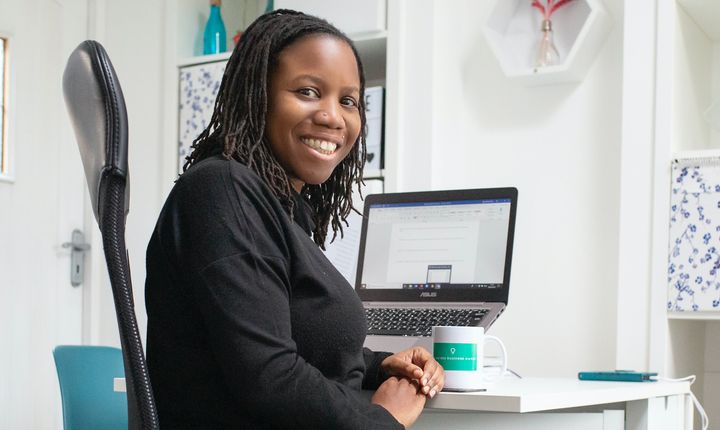
When Fatima Iftikhar initially called attention last month to “horribly racist” training materials used by the national charity organisation Citizens Advice, she didn’t intend to spark a movement.
But after her criticism of the group went viral on social media, it became clear that a larger conversation around racism in the charity world was long overdue. “I know from personal experience and that of my friends and colleagues that people of colour face constant racism working in the charity sector,” said the 25-year-old organiser with #POCIMPACT, a community run by and for people of colour in the social impact sector.
To raise awareness of the problem, she helped launch the CharitySoWhite campaign on Twitter, asking people to share their experiences. Now, current and former charity workers are speaking out about enduring racial slurs, being dismissed as interns or secretaries or mistaken for waiting staff at events.
“Many of us joined the charity sector as we wanted to tackle the inequalities and injustices in society,” said Saba Shafi, 32, who works as commercial director of the social justice charity Advocacy Academy in Brixton and is one of the co-organisers of the social media campaign. “Why is the charity sector not leading on this instead of being defensive and hiding behind the shield of good intentions? It shows hypocrisy and a lack of culpability.”
In its “best practice guide” for supervisors working with black, Asian and minority ethnic (Bame) communities, Citizens Advice, whose mission is to offer impartial advice to the public, claimed that minority communities were cash-centric, isolated, distrustful of authorities, highly religious and characterised by “low levels of literacy”, “early marriage and large families” and “a cultural focus on honour and shame”.
Following the backlash on social media, the organisation removed the materials from its website and launched an investigation into how they were produced. “It’s now clear that several failings led to this unacceptable material being on our website,” said Gillian Guy, chief executive of Citizens Advice. “I apologise unreservedly for this. We are acting quickly to make sure this can’t happen again.”
The investigation determined that the materials had been developed without the input of equality experts and published without adequate editorial oversight.
“I believe this incident, and the debate it led to, highlights important wider issues,” Guy added.“We’ve been too slow in our progress on inclusivity and diversity – when as an organisation and sector, we should be leading the way.”

The incident and the subsequent CharitySoWhite campaign has also led current and former workers in the charity sector to speak out about their experiences with institutional racism. One woman revealed that when she worked as the chief executive officer of a small charity, she also cleaned the office to save money.
After she resigned, however, she was replaced by a white man who she said was given a cleaner, an assistant and a £5,000 pay increase for working four days a week – while she had worked five. Others outlined how they were asked “where they had come from”, mistaken for charity beneficiaries or interns or confused with another person of colour.
Collette Philip Keen, 41, worked in the charity sector for almost eight years for a number of organisations before moving into advertising and the commercial sector.
She says she had some negative encounters at meetings and external events. “It was things like people confusing you with the other woman of colour in the office even when they look nothing like you.
“Or things like walking into meetings and people either ignoring you or assuming you are the intern or are helping rather than there as a speaker,” she told HuffPost UK.

Ranjit Kaur, 59, worked in the charity sector for seven years and was the CEO of one charity organisation. She left the sector in 2007 but carried on working as a consultant in the voluntary sector and is now medically retired.
She said she was often mistaken for a secretary or administrative assistant when working at various organisations and says when she met people at the front door, they would assume she was the director’s personal assistant, rather than the director herself.
“I once took a call from someone complaining about one of my colleagues, even though they had not done anything wrong, and during the conversation, the woman said something like ‘I am sick of these Pakis,’” Kaur said. “When I told her I was an Asian woman, she apologised profusely. She just never thought the director of the organisation would be an Asian woman.”

Shafi told HuffPost UK that she has had similar experiences. “When people know they are meeting the commercial director, they often do not realise it is me. The idea that I am a professional person with a layer of expertise is not their natural assumption.”
Often, she said, people assume she’s the beneficiary of the charity’s help – despite the fact that Advocacy Academy works with 16-year-olds. “In the moment, they pass it off by saying: ‘It’s because you look so young!’” Shafi said. “I might look younger than I am, but I don’t look half my age.”
That such racism and stereotypes persist in the charity sector is particularly frustrating, given that many charity groups are focused on fostering equality and human rights.
But that sense of mission can also create a blind spot when it comes to institutional racism, critics say. “There is a saying about not recognising discrimination when it happens to yourself. It is a bit like that in the charity sector,” Kaur said.
The staff and boards of many charities are often not diverse, Keen said, but organisations are quick to brush aside concerns about inequality because they are working to improve society as a whole.
“There is a perception that because people in charity are doing good, diversity and what they look like doesn’t matter,” said Keen. “With the great causes the charity sector seeks to tackle, I feel this is a real barrier to them doing their job effectively and reaching those communities. They are alienating the people they are trying to help because of poor leadership, a lack of diversity and a lack of understanding.”

Samir Jeraj, 34, a policy and practice officer at the charity Race Equality, said he is often approached by other charity groups asking how they can be more diverse and improve what they do for Bame communities.
“You have all kinds of standard organisations with poor representation at board and senior level of Bame people,” he said, and when workplaces don’t reflect the make-up of the people they are seeking to serve, it creates distrust and makes it difficult to achieve success.
“These organisations need to look at actively recruiting people from Bame communities by placing adverts in the right places or by headhunting people,” he said.
Meanwhile, negative experiences can drive people of colour away from the charity sector. Keen said she reached a point where she knew no matter how hard she worked, there was no room for her to advance.
“The opportunities were going to people whose faces would fit,” she said. “Those faces were not people of colour. They were mainly white, male and of a certain age.”
In 2016, Keen set up her own brand and strategy consultancy and now works with charities as part of her role. “There is some good work going on within the charity sector regarding diversity, but more needs to be done,” she said. “There is a certain defensiveness or brushing things under the carpet when race is mentioned. Charities need to listen and learn from people’s lived experiences.”
Kaur said she was also frustrated by the lack of progress. “I despair that we are in 2019 and haven’t been able to get equality in many areas,” she said. “I thought I was contributing to change and trying my hardest to bring about change.”
“Who is monitoring the charity sector?” she said. “It needs to come under more scrutiny.”
Shafi said that this lack of accountability is the reason that she helped launch CharitySoWhite. “There is nobody that holds the charity sector to account with regards to issues of institutionalised racism,” she said.
“We wanted to highlight that these experiences are happening and will continue to happen unless the charity sector makes significant changes to the way it operates.”
